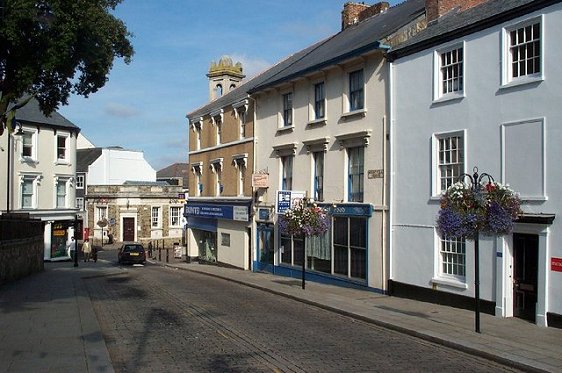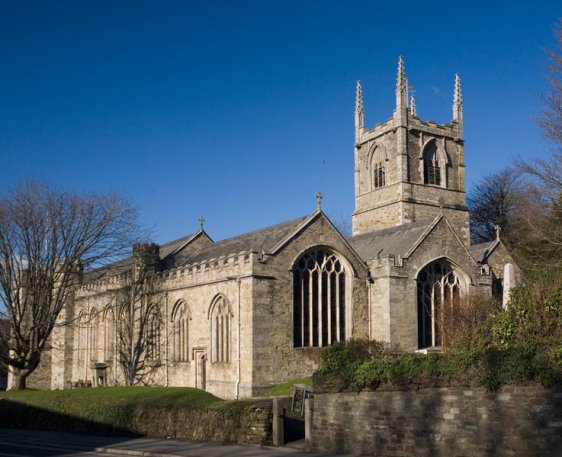 Bodmin, Cornwall, England: Source: https://commons.wikimedia.org/wiki/File:Fore_Street,_Bodmin_from_Turf_Street_-_geograph.org.uk_-_846665.jpg
Bodmin, Cornwall, England: Source: https://commons.wikimedia.org/wiki/File:Fore_Street,_Bodmin_from_Turf_Street_-_geograph.org.uk_-_846665.jpgAuthor: davir orr

Bodmin is a major town in Cornwall, England. Located in the heart of the county, it has a population of around 13,000 people (2012 estimate). The town is to the southwest of Bodmin Moor.
The history of Bodmin goes back to the 6th century, when St Petroc founded a monastery there, and a village developed around it. It is one of the oldest towns in Cornwall, and the only major Cornish settlement to be recorded in the Domesday Book in 1086.
Bodmin was the site where three Cornish uprisings took place. The first and second took place in 1497 while the third in 1549. These uprisings were the result of a general feeling of discontent among the locals against the center of government in London as well as religious animosity between the Catholic population of Cornwall against the Protestant rulers. Each of the uprisings were brutally suppressed.
Visiting Bodmin
Bodmin is served by the main highway through Cornwall, the A30 road. Coming from Manchester, take the M5 motorway which connects to the A30 at Exeter. Parish Church of St Petroc, Bodmin: Source: https://commons.wikimedia.org/wiki/File:Petroc-bodmin.jpg
Parish Church of St Petroc, Bodmin: Source: https://commons.wikimedia.org/wiki/File:Petroc-bodmin.jpgAuthor: Bocachete

Places of Interest in Bodmin
- Abbey of St Mary and St Petroc: Roman Catholic abbey built in 1965.
- Bodmin Gaol: Built in the late 18th century, this was the first British prison to incarcerate prisoners into separate cells. During the First World War, some of Britain's most prized treasures were brought here for safekeeping, among them the Domesday Book and the Crown Jewels.
- Chapel of St Thomas: Ruins of a 14th century building in Bodmin churchyard.
- Parish Church of St Petroc: Erected in 1472, this was the largest church building in Cornwall until the construction of Truto Cathedral.
 Latest updates on Penang Travel Tips
Latest updates on Penang Travel Tips

Copyright © 2003-2025 Timothy Tye. All Rights Reserved.

 Go Back
Go Back